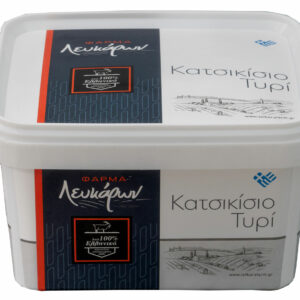Soft feta cheese from 70% sheep and 30% goat milk
Packaging
- 15 kg container on weight
- 7,5 kg container on weight
- Plastic container 2 kg
- Plastic container 900 gr
Did you know that
The feta cheese is white cheese made from goat's milk, which matures in brine. It was definitively registered as a PDO product only in 2002, following adventures and appeals mainly from Denmark and France. To qualify as a PDO Feta Cheese, it must meet certain conditions:
- To come exclusively from all of mainland Greece and, from the islands, only from Lesvos.
- To be prepared only from Greek pasteurized sheep and goat milk, at least 70% sheep and 30% goat milk.
- Use milk only from Greek sheep breeds, which feed on the local flora of each area, mainly on free pastures. Produced from October to mid-June.
- Contain low fat 43% dry and maximum moisture 55%.
- Cure for at least 2 months in wooden barrels or in tin cans.
Health & Nutrition
- Feta is a good source of calcium, phosphorus and protein, which have been shown to contribute to better bone health.
Calcium and protein help maintain bone density and prevent osteoporosis, while phosphorus helps your bones absorb calcium.
In addition, milk from sheep and goats contains more calcium and phosphorus than cow's milk. Therefore, incorporating cheeses, such as feta, into your diet will make it easier to achieve calcium ESP. - Probiotics are living, friendly bacteria that benefit your health. The slice has been shown to contain the probiotic Lactobacillus plantarum, which represents about 48% of the bacteria in the slice. These bacteria can help improve the health of the immune system and the gut by protecting the intestinal tract from disease-causing bacteria, such as E. coli and salmonella.
- In addition, probiotics increase the production of chemicals that inhibit the body's inflammatory response.
- Finally, test tube studies have shown that these resistant bacteria and other yeast strains found in the slice grow in a low pH environment, which means they survive on bile acids.
- The slice has good fat. Conjugated linoleic acid (CLA) is a fatty acid found in animal products. It has been shown to help improve body composition by reducing fat mass in it. CLA can also help prevent diabetes and has shown results in cancer.
Cheese from sheep's milk has a higher CLA concentration than that from cow's or goat's milk. The slice contains up to 1.9% CLA, which corresponds to 0.8% of its fat content. - And while this content of CLA may decrease after ripening and during storage, however, one study has shown that the use of bacterial cultures in cheese production (as in slice) contributes to an increase in CLA concentration. It is worth noting that Greece has the lowest incidence of breast cancer and the highest consumption of feta in the European Union.
- The slice is high in sodium (salt). In the process of making the slice, salt is added to the curd. In addition, during storage, the cheese should be immersed in brine with up to 7% salt. The end product is a cheese that has enough sodium. Specifically, the slice contains 312 mg of sodium per 28 grams of serving, which corresponds to 13% of the ISS in sodium. A good idea to reduce the salt content of the slice is to rinse it with water before putting it on your plate.
- The slice is high in lactose. Fresh cheeses and cheeses with high levels of milk tend to have more lactose than aged cheeses. Since feta is a fresh whole milk cheese, it has a higher lactose content than other cheeses, such as gouda, parmesan and anthotyro.
Those who are allergic or lactose intolerant should avoid eating fresh cheeses, including feta cheese.
Suggestions for consumption
- Xinotyri is eaten with fruit or honey or spread on bread.
- When used as a food accompaniment, combine it with high-quality white wines.
- Ideal for accompanying grilled meats
Nutritional
| Fat | 4,0 g |
| Carbohydrates | 5,2 g |
| Proteins | 3,5 g |






